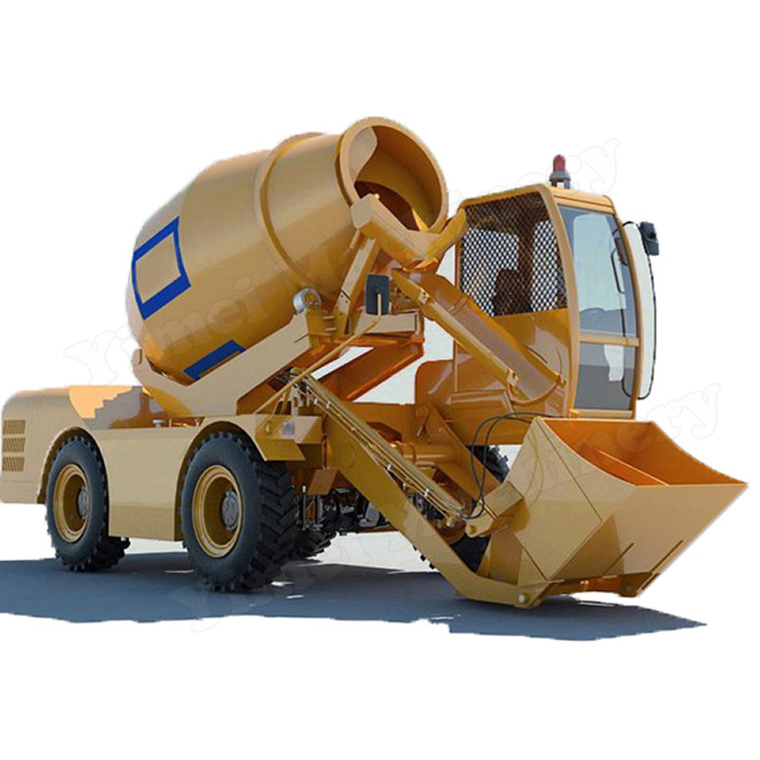

1. Acceptance of medium-sized concrete mixers
Medium-sized concrete mixer is generally used in small and medium-sized construction projects, the acceptance process should focus on the following points:
Appearance inspection: Confirm that the appearance of the mixer is free from obvious damages, corrosion and cracks, and that there should be no looseness in the joints of the casing, mixing drum, bracket and other parts.
Performance test: The person in charge should carry out a test run to check the working condition of the mixer under the rated load, observe whether the mixing effect is even and whether there is any abnormal noise during operation.
Electrical system test: Check whether the electrical system, including switch, wiring, meter and other functions are normal, and make sure the motor runs smoothly.
Safety devices: Confirm whether the safety protection devices (such as emergency stop switch, limit switch) of the mixer are effective to ensure safe operation.

2. Acceptance of diesel concrete mixer
Diesel concrete mixer is usually used in construction sites with inconvenient power supply access, which requires attention during acceptance:
Appearance and structure inspection: check whether the diesel engine, fuel tank, air intake system and other components are intact, no obvious damage to the appearance.
Diesel engine performance test: start the diesel engine, check whether it runs smoothly, whether the power to meet the production requirements. At the same time, test whether the emission meets the environmental standards.
Mixing effect: conduct actual mixing experiment to confirm the uniformity and quality of concrete mixing.
Oil system check: check whether the oil system is smooth and whether there is oil leakage in the oil connection.
3. Acceptance of tilting drum concrete mixer
Tilting Drum Concrete Mixer needs to be paid attention to during acceptance inspection due to its special design:
Checking the tilting angle of the drum: Make sure the tilting angle of the drum is within the specified range, and confirm the flexibility and stability of the tilting device.
Evaluation of mixing effect: Conduct mixing experiments to observe the mixing effect of concrete and check whether there are any dead corners.
Electrical and mechanical safety: Check the connection condition and safety protection of the motor and transmission device, and make sure there is no abnormal noise and vibration.
Cleaning and discharging system: Ensure that it is easy to clean after mixing, the discharging system is smooth, and there is no residual concrete.
4. Acceptance of automatic concrete mixer
Automatic concrete mixer has a high degree of intelligence and automation, which needs to be paid attention to during acceptance:
Automatic control system check: test the working status of the automatic control system, including whether the sensor, PLC control, remote monitoring and other functions are normal.
Mixing accuracy test: check the accuracy of its quantitative feeding and mixing uniformity, and verify its effect through actual concrete mixing.
Alarm and Safety Protection Function: Ensure that the alarm system and safety protection measures of the equipment are effective and can respond quickly in case of failure.
Data recording and output: Confirm that the automation system can normally record production data and has data output and query functions.
5. Acceptance of electric concrete mixer
Electric concrete mixer is the most common mixing equipment and should be checked during acceptance:
Motor inspection: Confirm the rated power and speed of the motor, and no abnormal vibration and noise when starting.
Control panel function: check whether the functions of the control panel (such as start and stop, forward and reverse, speed adjustment, etc.) are normal and the operation is simple and easy to understand.
Mixing effect actual test: carry out actual mixing, observe the uniformity and consistency of concrete to ensure that the design requirements are met.
Maintenance and safety guidance: Provide detailed instructions and maintenance manuals to ensure that the operator understands. Check whether all kinds of safety facilities are complete.
Summarize
It is generally recommended to be guided by engineers or maintenance personnel with specialized knowledge when carrying out acceptance inspection of various types of concrete mixers. Through the above inspections and tests, the performance and safety of the concrete mixer can be effectively ensured to ensure its normal operation in the actual construction.